Sklopive kartonske kutije bile su glavni proizvod u industriji pakiranja zbog svoje svestranosti, jednostavnosti upotrebe i isplativosti. Kao osnovni alat za pakiranje raznih proizvoda – od pakirane hrane do elektronike – razumijevanje osnova sklopiva kartonska kutija pakiranje je presudno. Evo što biste trebali znati.
1: Razumijevanje pakiranja sklopivih kartonskih kutija
Sklopive kartonske kutije, obično izrađene od kartona, otpremaju se ravne i sastavljene u kutiju kada je to potrebno. Mogu se prilagoditi u veličini, obliku i ispisu, što ih čini fleksibilnim i popularnim izborom za mnoštvo proizvoda.
2: Stilovi i vrste sklopivih kartona
Sklopive kartonske kutije dolaze u raznim stilovima, ovisno o njihovom zatvaranju i načinu sastavljanja. Popularni stilovi uključuju uvučene kutije, donje kutije s automatskim zaključavanjem, brtvene kutije i zabatne kutije. Svaki nudi različite razine sigurnosti i estetske privlačnosti.
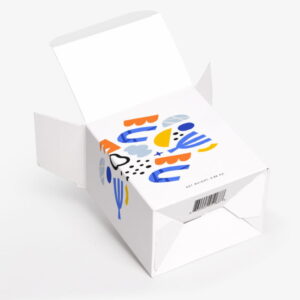
The donja kutija s automatskim zaključavanjem, ili crash bottom box, ima dizajn dna koji se automatski zaključava na mjestu tijekom sastavljanja jednostavnim preklopom. Ovaj stil kutije preporučuje se za teže proizvode, poput vina i piva, jer je najjači među svim opcijama pakiranja papirnatih kutija navedenih u nastavku.
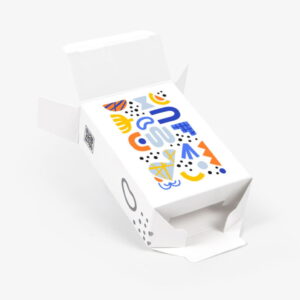
Alternativno, uskočno dno ili zaključajte donju kutiju je još jedna snažna opcija prikladna za teže predmete poput vina ili elektronike. Također poznat kao donja kutija 1-2-3, ovaj stil kutije ima preklope koji se guraju jedan u drugi i zaključavaju na mjestu.
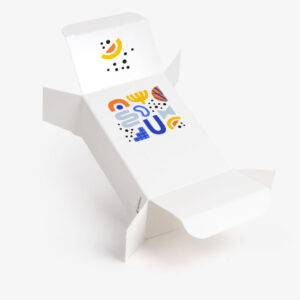
Ravne uvučene kutije skladište se ravno i ne zahtijevaju dodatnu montažu. Prepoznatljivi su po tome što imaju gornji i donji zatvarač na istoj strani kutije i proreze na krajevima koji drže utore zaključane. Ovaj je stil idealan za lagane ili srednje teške proizvode poput kozmetike ili eteričnih ulja.
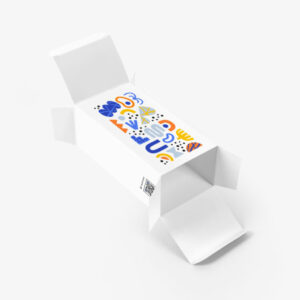
Preokrenuti kraj kutija isti su kao i ravni tuck, ali imaju krajnje zatvarače na suprotnim stranama kutije. Budući da su gotovo identične, obrnute kutije također su idealne za lagane ili srednje teške proizvode.
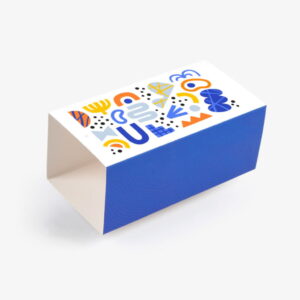
Papirnato omotno pakiranje je kartonski stil dizajniran da se stavi preko druge, obično neukrašene kutije. Ova je opcija vrlo popularan izbor jer je najjeftinija opcija i može odmah stvoriti fantastičnu prilagodbu za običnu kutiju.
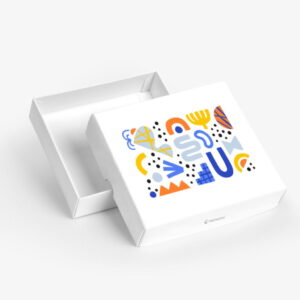
Kutije s pladnjem i poklopcem s dvostrukim stijenkama ili dvodijelne kutije odvojeni su gornjom i donjom polovicom. Pladanj i poklopac čvrsto pristaju zajedno kako bi stvorili čvrstu dvostruku stijenku idealnu za luksuzne proizvode poput nakita i odjeće ili služe kao ambalaža za hranu za proizvode poput slastica.
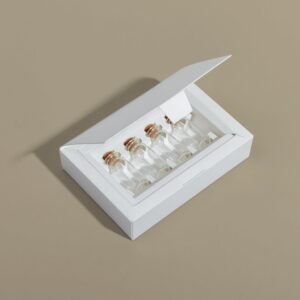
Prilagođene sklopive kartonske kutije posljednja su popularna opcija. Tko je rekao da sklopivi kartoni moraju biti na određeni način? Prilagođeni izrezi i umetci za gore navedene opcije ograničeni su samo na maštu. Dobro postavljeni izrez ili umetak mogu dodati jedinstveni sjaj vašem pakiranju, diferencirajući se od konkurencije!
3: Proizvodni procesi
Proizvodnja sklopivih kartonskih kutija uključuje nekoliko faza — dizajn, tisak, rezanje, savijanje i lijepljenje. Nove tehnologije i tehnike neprestano se razvijaju, povećavajući preciznost i učinkovitost ovih stupnjeva.
4: Mogućnosti prilagodbe i dorade
Sklopiva kartonska ambalaža može se lako prilagoditi različitim otiscima, utiskivanjem, UV točkastim ispisom ili posebnim rezovima. Laminati, lakovi ili premazi mogu se primijeniti za dodatnu zaštitu i estetsku privlačnost.
5: Prednosti pakiranja sklopivih kartonskih kutija
Sklopive kartonske kutije nude pristupačnost, laganu prirodu i jednostavnost skladištenja i transporta. Također su vrlo prilagodljivi, što ih čini svestranim za širok raspon proizvoda. Osim toga, njihova priroda koja se može reciklirati čini ih ekološki prihvatljivom opcijom pakiranja.
Često postavljana pitanja:
1. Jesu li sklopive kartonske kutije dovoljno izdržljive za teške proizvode?
Da, uz odgovarajući odabir materijala i dizajn, sklopive kartonske kutije mogu podnijeti širok raspon težine. Međutim, za vrlo teške ili lomljive predmete razmislite o dodatnom zaštitnom pakiranju.
2. Mogu li koristiti sklopive kartonske kutije za prehrambene proizvode?
Da, mnogi prehrambeni proizvodi pakirani su na siguran način pomoću sklopivih kartonskih kutija. Posebni materijali za hranu osiguravaju sigurno skladištenje namirnica.
3. Postoji li minimalna količina za naručivanje prilagođenih sklopivih kartona?
To može uvelike varirati ovisno o dobavljaču pakiranja. Neki nude vrlo niske minimalne količine narudžbe, dok drugi mogu zahtijevati veće narudžbe radi isplativosti.
4. Može li se sklopiva kartonska ambalaža učiniti ekološki prihvatljivijom?
Da, odabirom recikliranog ili održivog kartona i smanjivanjem upotrebe završnih slojeva koji se ne mogu reciklirati vaša sklopiva kartonska ambalaža može biti zelenija.
5. Kako se sastavljaju sklopive kartonske kutije?
Većina sklopivih kartonskih kutija dizajnirana je za jednostavno sastavljanje, često zahtijevajući jednostavno rasklapanje i pričvršćivanje prethodno zalijepljenih dijelova.
U svijetu pakiranja, sklopive kartonske kutije i dalje drže svoje mjesto svojom pouzdanošću, svestranošću i isplativošću. Kroz razumijevanje njihovih stilova, proizvodnih procesa i mogućnosti prilagodbe, možete otključati puni potencijal ovih radnih konja za pakiranje. Bilo da ste velika korporacija ili mala tvrtka, sklopive kartonske kutije služe kao pouzdani saveznici za vaše potrebe pakiranja.
